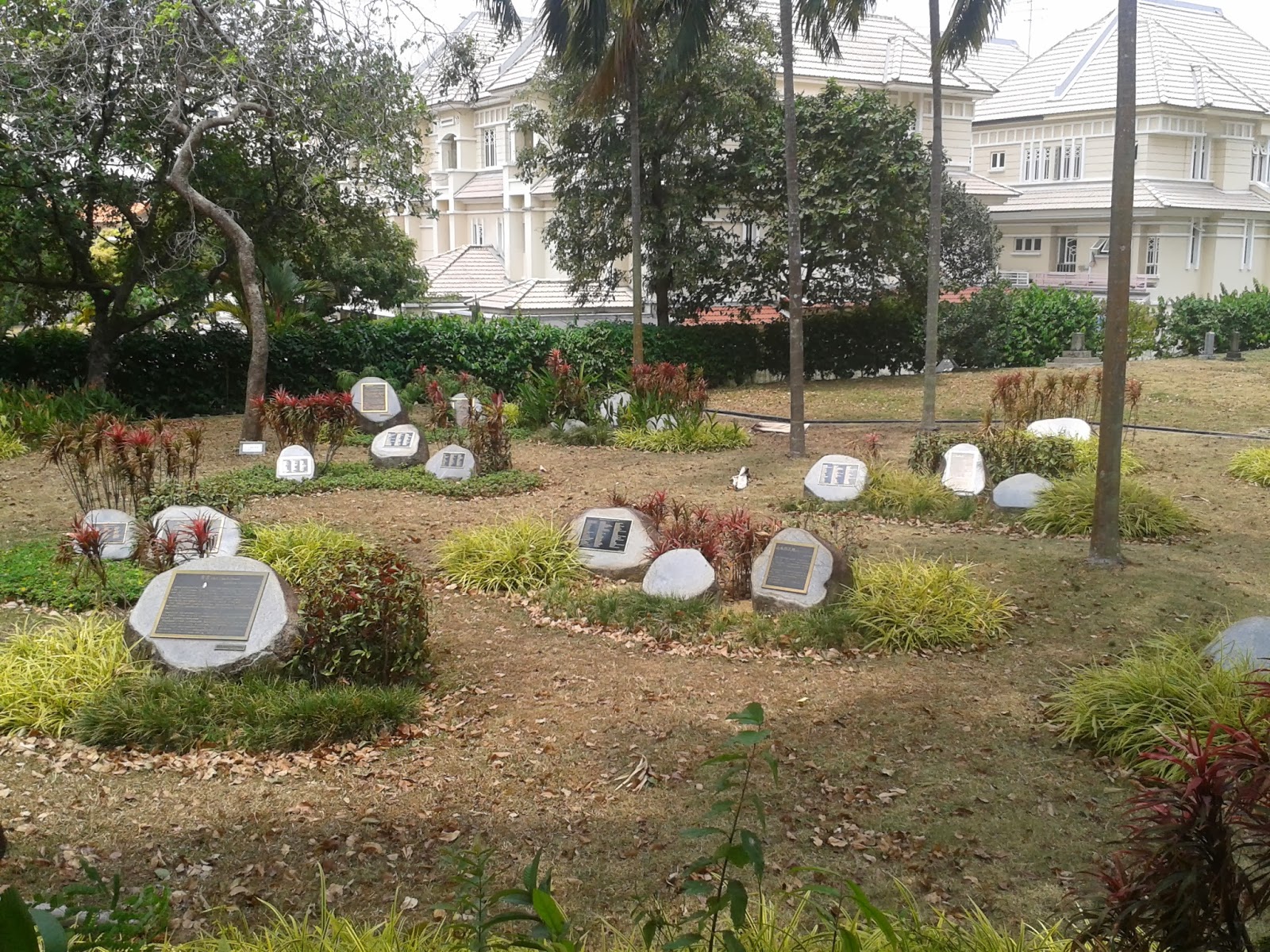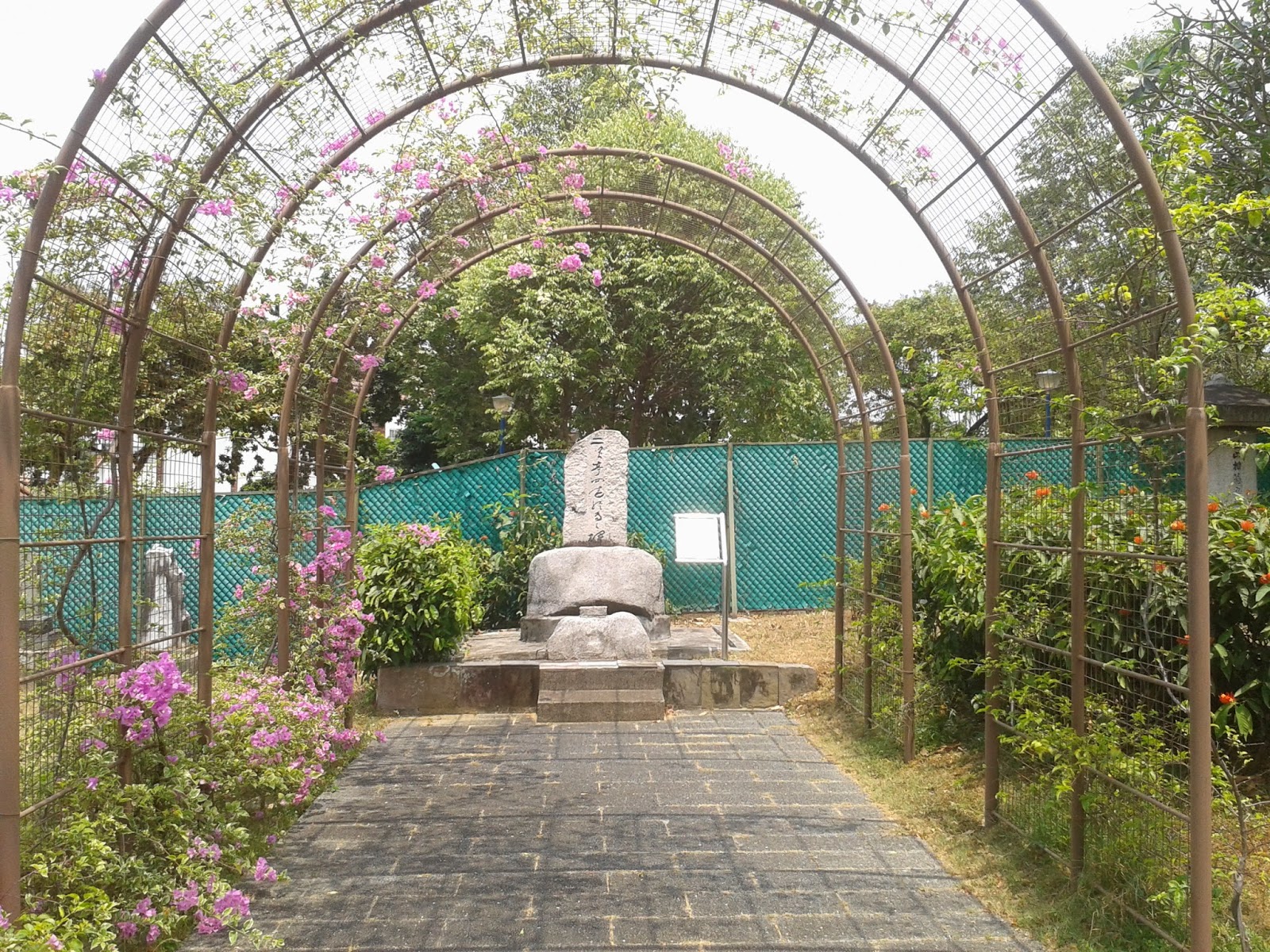The cemetery is probably the largest burial ground for Japanese outside of Japan, but definitely the largest in South East Asia. It is reportedly the resting place for an estimated 10,000 war dead. On grounds of 29,359 sq meters there are 910 graves, which hold the remains of Japanese prostitutes, civilians, soldiers and convicted war criminals executed at Changi Prison.
Tagajito Futaki, also the owner of brothels, received permission from the British colonial government to convert the plantation to a cemetery.
5 rubber trees remain from the time of the plantation and the largest has been designated as a Heritage Tree in 2006. The history of the local rubber plantations and rubber trade originates in the Amazon region, where a large quantity of rubber seeds were collected in 1986 for transport to Kew Botanic Gardens in London. After successful cultivation, seedlings were sent to Ceylon and Singapore Botanic gardens in 1977 for further distribution to the Malay Peninsula. By 1920 the Malay Peninsula produced more than half of the world's rubber supply and Singapore became the centre of the international rubber trade.
The cemetery was the burial ground for young Japanese women who died in destitution. During WW II, the cemetery was used to bury Japanese civilians and soldiers who lost their lives on the battlefield or to illness. In 1973 the Singaporean Government issued a decree prohibiting further burials in 43 cemeteries in Singapore, including the Japanese Cemetery. In 1985 a requisition notice was received, but after appeals from among others the Japanese Ambassador to Singapore, the lease on the area was extended by 30 years, plus potentially another 20 years in 1989.
Hinomoto Guardian Deity Built in memory of 41 Japanese civilians who died at the internment camp at Jurong while waiting for repatriation after the Japanese defeat in WW II.
War Memorial erected in memory of those who lost their lives during the Pacific War.
Heritage Lychee tree
The grave of Mr Tagajito Futaki, plantation and bordello owner, the founder of the cemetery.
Memorial to donors.
Memorial Plaza an open area with well-known Japanese in Singapore (who are not buried here) are commemorated with this structure. Among others, Harimau is commemorated here. Tani Yutaka, known as Harimau (Malay for Tiger) was a secret agent for the Japanese military who passed away in a hospital in Singapore. His life story has been adapted for novel and film.
The remains of Otokichi Yamamoto are housed in this Charnel. 14 year old Otokichi was a deckhand when the ship he was on was met with a violent storm. The ship drifted for 1 year and 2 months before reaching the shores of America. Later Otokichi lived in Macau and Shanghai, before he emigrated to Singapore in 1962, and became the first Japanese resident of Singapore
Prayer Hall
Memorial of a famous writer, Futabatei Shimei, who fell ill in Russia and died en route to Japan.
The majority of the cemetery hoses the graves of the Karayuki-san. During the Meiji era many girls from poor households were sold to work in Southeast Asia. Called Karayuki-san, many of them died in Singapore.























































